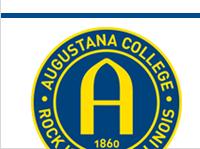Title
Optimality Theoretic L2 reranking and the Constraint Fluctuation Hypothesis: Coda nasals in the L2 English of L1 Spanish speakers
Document Type
Conference Proceeding
Publication Date
2011
Disciplines
First and Second Language Acquisition | Linguistics | Phonetics and Phonology | Spanish and Portuguese Language and Literature
Description, Abstract, or Artist's Statement
In this paper it is maintained that L2 phonological acquisition is different from child L1 acquisition, but not as it relates to accessibility to Universal Grammar. While adults can acquire new phonemic categories and access universal phonological constraints, this paper proposes that the manner in which newly acquired target phonological processes can be fixed in the sense of a steady state in adulthood is fundamentally different. Offering the Constraint Fluctuation Hypothesis (CFH), which assumes Optimality Theory (OT), it is acknowledged that L2 constraint reranking is possible but never achieves a steady state as in L1 acquisition. If on the right track, the CFH reconciles documented optionality in L2 phonological production within the same learners and individual differences across learners.
Original Citation
Goodin-Mayeda, C. Elizabeth, Jeffrey Renaud and Jason Rothman. 2011. Optimality Theoretic L2 Reranking and the Constraint Fluctuation Hypothesis: Coda Nasals in the L2 English of L1 Spanish Speakers. In Selected Proceedings of the 4th Conference on Generative Approaches to Language Acquisition North America (GALANA 2010), ed. Mihaela Pirvulescu et al., 66-77. Somerville, MA: Cascadilla Proceedings Project. www.lingref.com, document #2586.
Augustana Digital Commons Citation
Goodin-Mayeda, C. Elizabeth; Renaud, Jeffrey; and Rothman, Jason. "Optimality Theoretic L2 reranking and the Constraint Fluctuation Hypothesis: Coda nasals in the L2 English of L1 Spanish speakers" (2011). Spanish: Faculty Scholarship & Creative Works.
https://digitalcommons.augustana.edu/spanfaculty/2
Creative Commons License

This work is licensed under a Creative Commons Attribution-Noncommercial-No Derivative Works 3.0 License.
